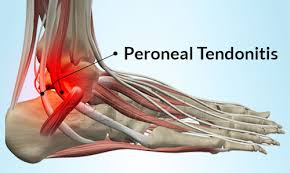. Overuse: The most common cause of tendonitis is overuse, which means a tendon is overly stretched and possibly experiencing a small degree of pulling apart or tearing. This occurs when there is an increase in activity, which can include anything from walking to participating in competitive sports.
. Abnormal foot structure: Problems such as flat feet or high arches can create muscular imbalances that put stress on one or more tendons.
. Trauma: A foot or ankle injury can cause tendonitis. This can occur with a sudden, powerful motion like jumping. Another form of trauma is chronic rubbing against a shoe, which most often occurs at the top of the foot or heel, resulting in tendonitis in those areas.
. Medical conditions: Certain medical conditions that cause general inflammation can lead to tendonitis. Inflammatory conditions such as rheumatoid arthritis, gout, and spondyloarthropathy can cause Achilles tendonitis or posterior tibial tendonitis



 Contact Us
Contact Us







 Hospitals
Hospitals
 Doctors
Doctors
 Diagnostic
Diagnostic
 Pharmacy
Pharmacy
 Health Tips
Health Tips
 Blog
Blog

























Comments